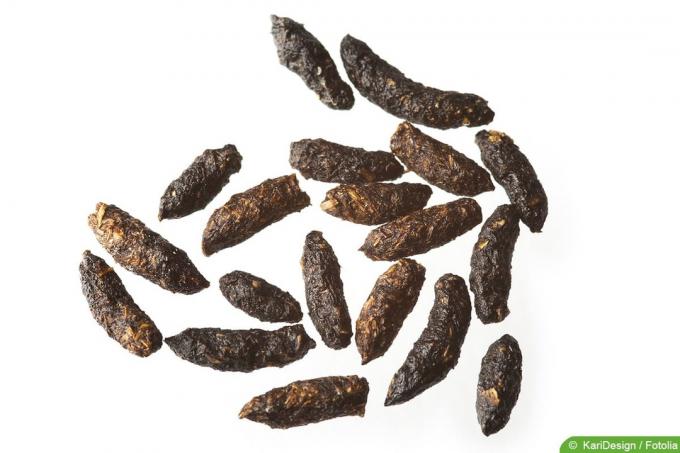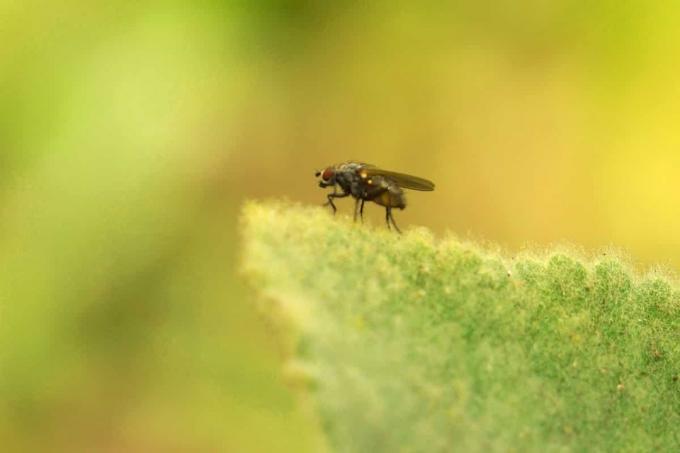

Table of contents
- What is the hantavirus?
- Dangerous sites of infection
- Properly remove mouse droppings
- airing
- protective gear
- Moisten mouse droppings
- Do not use a vacuum cleaner
- post-cleaning
- prevention
The bank vole and other small rodents transmit the hantavirus, which is also dangerous for humans. Infection occurs through inhalation of mouse feces, so certain precautions are necessary when removing.
What is the hantavirus?
There is not just one hantavirus, but many different ones. The pathogens are widespread and can be transmitted to humans through animal excrement. An infection triggers a flu-like illness, during which the kidneys can fail. The bank vole in particular, but also other small rodents carry the virus and excrete it with their faeces. There they remain infectious for a long time, even on dried mouse droppings. The animals themselves do not get sick. Incidentally, direct contact with infected mice is not necessary for an infection: inhaling infectious mouse droppings from dust that has been thrown up is sufficient.
Dangerous sites of infection
You are particularly at risk in these places:
- in deciduous forests, especially in beech and oak forests, e.g. B. in forest work
- when working in the field or in the garden
- in sheds, garden sheds or stables
- in attics and in basements
- when staying in areas heavily infested with rodents (v. a. southern and central Germany)
Properly remove mouse droppings
In particular, when cleaning a coop or shed that may be infested with mice, use caution and follow the safety precautions below.
airing
The first measure before any cleaning action is thorough ventilation. Open doors and windows fully and don't just tilt them - there must be a proper draft so that air exchange can take place. This is how you transport some of the dangerous hantaviruses – as well as other pathogens – outside. It is also important that you are not in the room during the ventilation action, which lasts at least 30 minutes.
protective gear
The hantavirus is mainly transmitted via the respiratory organs, but also through skin contact. It is therefore important to prevent these routes of infection with suitable protective equipment. Wear during cleaning action
- high-necked clothing with long sleeves and pant legs
- Disposable gloves that are discarded after use
- a tight-fitting mouth and nose protector
A notice:
An everyday mask is not very suitable as mouth and nose protection because it does not stop the virus. Instead, choose an FFP2 or FFP3 mask, which offer 80 or even 99 percent protection.

Moisten mouse droppings
Since the viruses are inhaled when (dry) mouse droppings are stirred up by movement or drafts, you should prevent dust formation by moistening. This dust development is particularly high when working with a broom or a vacuum cleaner and can therefore increase the risk of infection many times over. Moisten the mouse droppings as follows:
- Fill a spray bottle with water
- Add a few drops of detergent
- A commercially available vinegar cleaner is suitable for this
- Shake the mixture vigorously
- Spray the solution onto the dirt to be removed
Do not use a vacuum cleaner
Do not remove the dirt with the vacuum cleaner, as this will spread the excrement dust along with the viruses further into the room via the exhaust air. Instead, it's best to use a shovel and broom to sweep up all the dirt and then put it in a plastic bag. This is disposed of tightly closed with the household waste. Do not throw them in the household rubbish first, but straight away in the rubbish bin.
A notice:
If there are only a few mouse droppings, you can wipe them up with a strong kitchen towel. However, you should also dispose of the cloth afterwards.
post-cleaning
This is followed by thorough, damp cleaning of the affected areas. This not only serves to protect against viruses and other pathogens, but also to completely remove traces of faeces and urine as well as any unpleasant odors that may have occurred. A vinegar-based cleaner (this time applied undiluted) or a commercially available disinfectant are very suitable for this purpose.
Alternatively you can baking soda use:
- thick layer of baking soda (eg. B. Kaisernatron).
- alternatively use cornstarch
- Moisten with a spray bottle filled with water
- leave on for a day
- Remove powder and wipe with a damp cloth
A notice:
After the cleaning action, you should wash the clothes at at least 60 degrees Celsius and wash your hands thoroughly yourself. However, it is better to take a shower and not forget to wash your hair.
prevention
However, the best way to protect yourself and your family from the hantavirus is to prevent or prevent a mouse infestation from the outset. fight one immediately. (Snap) traps, the laying out of poisoned baits and, in the case of a strong occurrence, an experienced pest control are suitable for this. Be careful, especially when you are near a piece of forest overgrown with many beeches or oaks or parks because the main vector of the virus, the bank vole, is particularly common in this area occurs. To keep them and other rodents out of your home, these precautions are useful:
- Never store food open, but always store in an airtight container
- the same applies to animal feed, especially grain and maize
- do not leave animal feed overnight (e.g. B. chicken feed)
- Only dispose of waste in well-sealed dustbins
- no leftover food on the compost heap
- shelter (e.g. B. Remove piles of leaves, wood and stones
- do not leave bulky waste for a long period of time
- close possible loopholes in buildings
 Home editorial office
Home editorial office
Learn more about home pests

Drive away cockroaches: leave the light on at night?
Cockroaches are among the most disgusting pests that can appear in living spaces. But the disgust factor is only one side of the coin. The other is that the crawlies contaminate food supplies with pathogens. It is therefore essential to declare war on insects. Can cockroaches be repelled by leaving the light on at night?

Spotting mites in bed: 9 signs of bed mites
Mites are found everywhere in the home. Even in a clean, well-groomed bed, millions of animals can be found. This is not only a problem for allergy sufferers, but can also cause allergies.

Identify cockroaches: what do cockroaches look like?
Cockroaches are disgusting, everyone agrees on that. Worse still, they nibble at our food supplies and leave behind disease-causing germs. Because cockroaches flee and hide at lightning speed, we rarely see them. But then everyone should recognize them immediately.

Electric spider in the house: how to get rid of it
A thin body and long, thin legs characterize the electric spider. It got its name because it trembles when touched. The insect likes to stay indoors. Read how to banish the unwanted guest from your apartment.

Fight houseflies: 10 remedies & tips
The housefly can be fought with various traps that have been prepared with attractants. Adhesive surfaces or liquids ensure that the insects can no longer escape. In addition, there are simple measures to keep the annoying flies out of the apartment.

Fight bread beetles: 7 tips to get rid of them
If you want to fight the bread beetle, you have to work with a few tricks. The pests do not like heat or sub-zero temperatures. While a trap is used for the first stock control, the insects can be eliminated directly with natural means. Preventive measures prevent re-infestation.
